
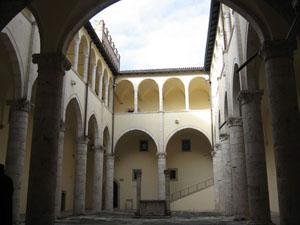
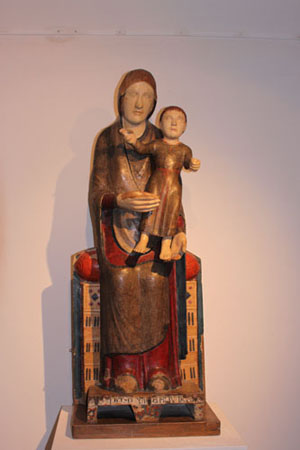
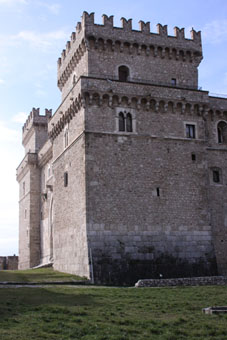
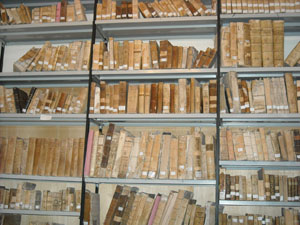

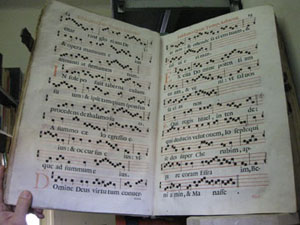
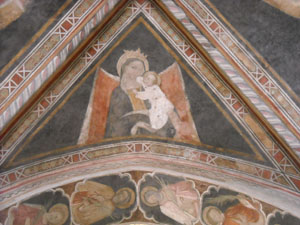
 |
 |
 |
 |
 |
 |
 |
 |
|
To the north of the small medieval town overlooked by Mount Velino, is the striking Romanesque church of Santa Maria in Valle Porclaneta dating from the eleventh century. The shape of the upper part of facade repeats the line of the slope of the mountains behind, favouring the natural integration of architecture into the landscape. The three naved interior of the church houses an elegant pulpit dating from 1150 supported by octagonal pillars and a contemporary ciborium (…) | |
|
We consider this church is an example of the purity of Romanesque art embellished by the rich carving of the ornaments that evoke the emotion of the visitor. It is badly in need of restoration and this fact should be brought to the attention of the worlds of culture and tourism. A nord del piccolo borgo medievale dominato dal monte Velino, si trova la suggestiva chiesa romanica di Santa Maria in Valle Porclaneta, risalente all'XI secolo. La sagoma della parte alta della facciata ripete la linea di declivio dei monti retrostanti, assecondando il naturale inserimento dell'architettura nel paesaggio, L'interno a tre navate della chiesa custodisce un elegante ambone del 1150 retto da pilastrini ottagonali e un coevo ciborio. (…) Consideriamo questa chiesa un esempio della purezza dell'arte romanica impreziosita dal ricco intaglio degli arredamenti interni che suscitano l'emozione del visitatore. Necessita di restauro e di una valorizzazione che preveda una più ampia diffusione culturale e turistica. |
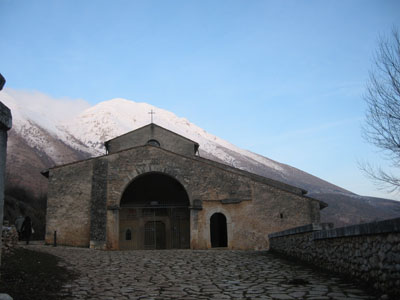
Church of Santa Maria in Valle Porclaneta, XI century
|

Interior of Church of Santa Maria in Valle Porclaneta
|

Interior of Church of Santa Maria in Valle Porclaneta
|
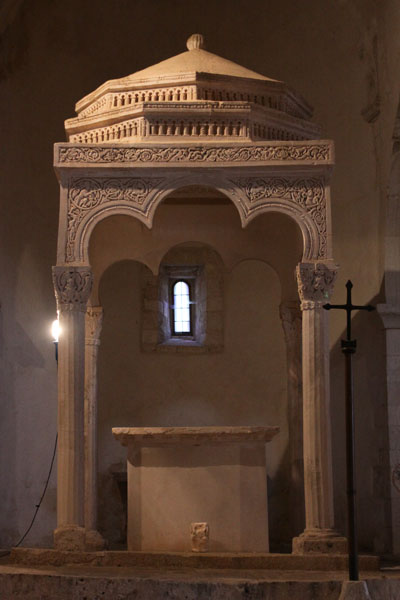
Ciborium, 1150. Church of Santa Maria in Valle Porclaneta
|
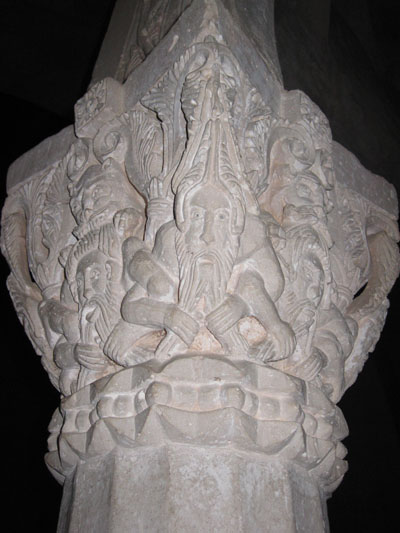
Capital of the ciborium, 1150. Church of Santa Maria in Valle Porclaneta
|
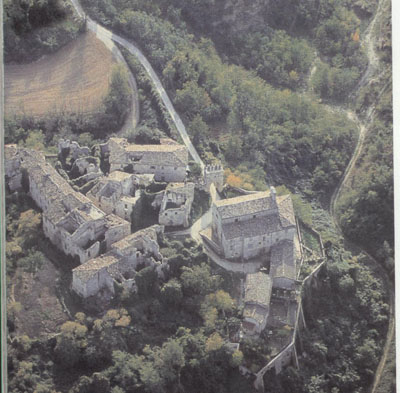
Aerial view of Faraone |
|

Main view of the Church of Santa Maria della Misericordia. |

3. View of Faraone castle |

Statue of Hercules sitting, I century BC., Archeological Museum,
originally in Alba Fucens
|
|
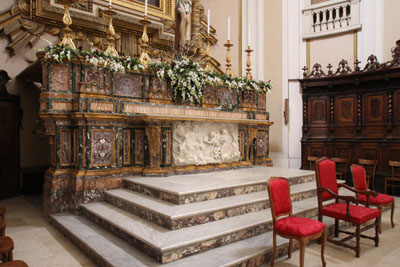
Main altar of San Giustino, XVIII century
|
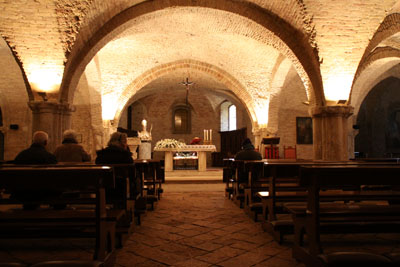
Crypt of San Giustino
|
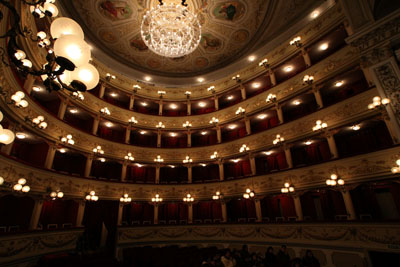
Marrucino Theatre, interior, XIX century
|
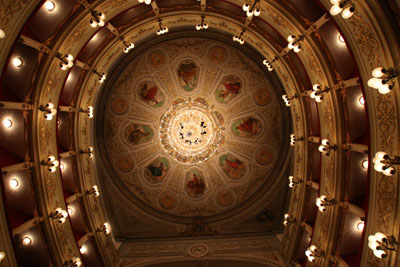
Marrucino Theatre, interior, XIX century
|
|
GUARDIAGRELE TOWN The “noble stone town”, immortalized by Gabriele D’Annunzio in his Triumph of death, is an ancient village with a rich artistic heritage. The church of Santa Maria Maggiore, built around the XII century, has been variously altered over the centuries. The beautiful façade was built during the initial construction phase, and is of Romanic-Burgundian style, with the high central tower which serves as both an entrance and a bell-tower. NB We reject the placement of an ugly, grinding steel structure on the roof of the church, visible above the façade. La “nobile città di pietra”, immortalata da Gabriele d'Annunzio nel Trionfo della morte, è un antico borgo con un ricco patrimonio artistico. La chiesa di Santa Maria Maggiore, edificata intorno al XII secolo, è stata oggetto di varie modifiche nel corso dei secoli successivi. Al primo periodo della costruzione risale la bella facciata, di stile romanico-borgognone, con l'alta torre centrale che funge da ingresso e da campanile NB. Deploriamo la collocazione di una brutta, stridente struttura in acciaio sul tetto della chiesa, visibile dalla facciata frontale. |
|
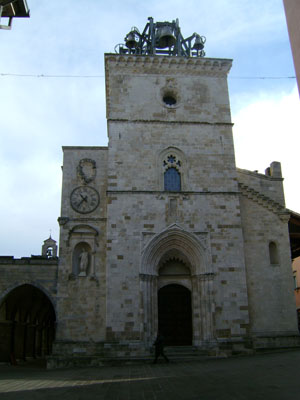
Façade of Santa Maria Maggiore
|

Door of Santa Maria Maggiore
|

Andrea Delitio, Saint Christopher, fresco signed and dated 1473,
portico of Santa Maria Maggiore
|

Crowning of the Virgin and angels, Cathedral Museum
|
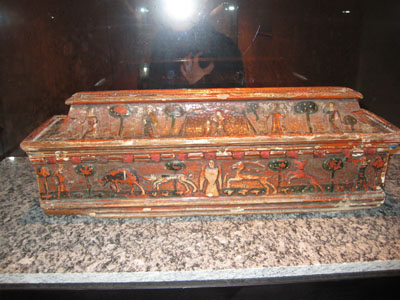
6) Casket in carved, polychromatic wood, second half of XIV century,
Cathedral Museum, originally in San Francesco Church
|
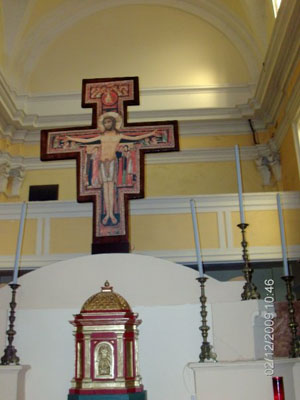
|
|
INTRODUCTION TO THE ROMAN MOSAIC IN PESCARA This original Roman mosaic dates back to the III century AD and is located in the old area of Pescara, under 2 metres of sand, in a car park.It was discovered accidentally and it is of great archaeological interest as it provides evidence of the trading activity that took place in the Aternum river port, created by the Emperor Tiberio in the I century AD and that gained great importance in the III century AD. A reproduction of this mysterious mosaic is permanently installed at the Museo delle Genti d'Abruzzo in Pescara. Bringing to light the original mosaic and letting the social community enjoy it would be welcomed and appreciated, right because it represents a meaningful part of the artistic heritage and the history of our town. Pescara needs to search for its historical roots to emphasize its cultural identity. |
|
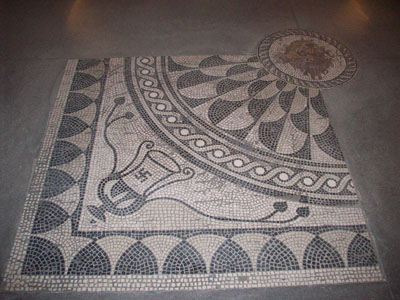
Reproduction of the Roman mosaic dating back
to the III century AD. Museo delle genti d'Abruzzo
|
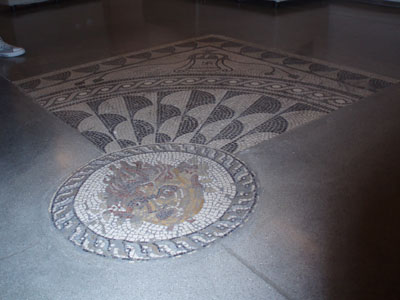
Reproduction of the Roman mosaic dating back to the III century AD
|
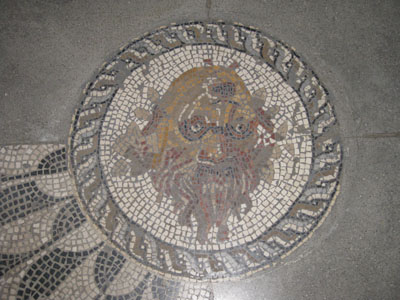
Detail of the reproduction of the
Roman mosaic dating back to the III century AD
|
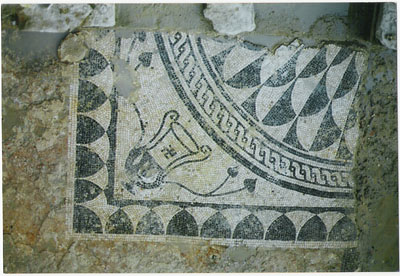
Original Roman mosaic dating back to the III century AD, discovered in Pescara
|